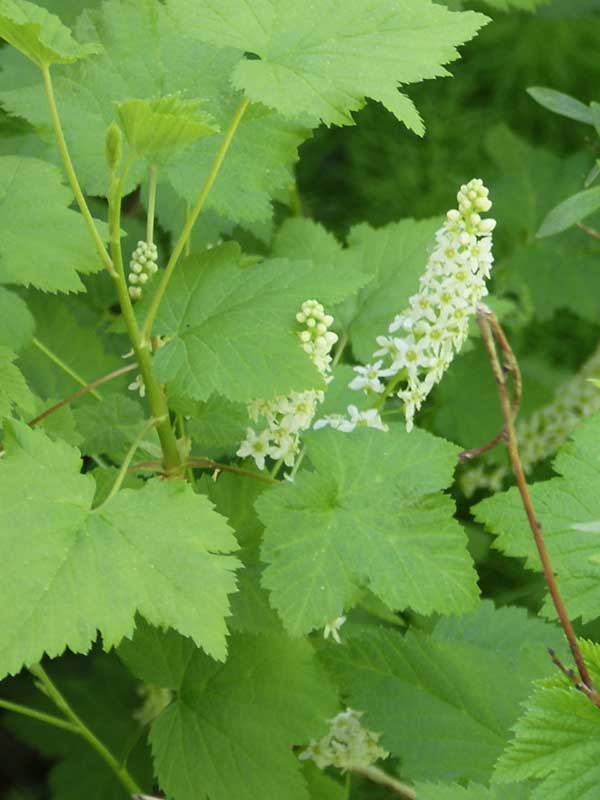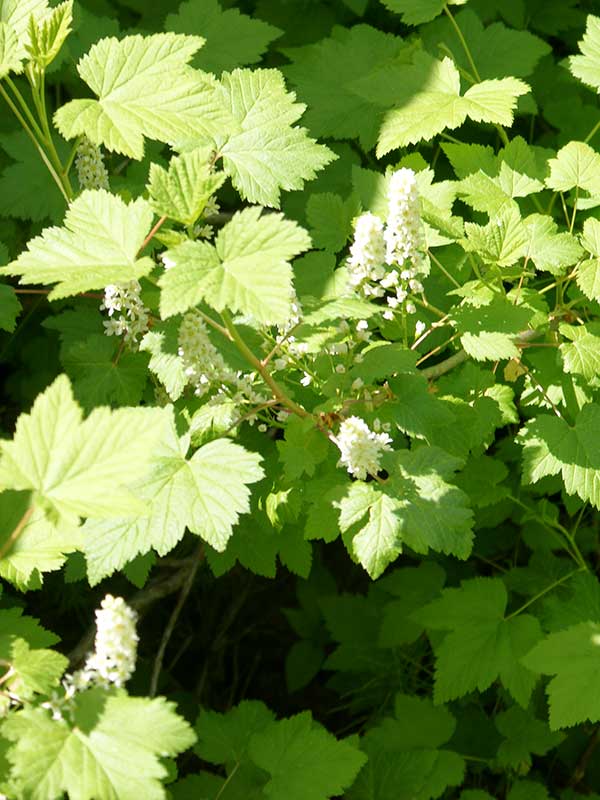Ribes hudsonianum / northern black currant
- moist wooded areas, streambanks
- erect, spike-like inflorescences with up to 50 white flowers
- bitter berries, ripening to black
- leaves and stems covered with resinous glands
- leaves 3-5 lobed, glandular below
- smells bad
Northern black currant is an erect shrub growing to as tall as 80 inches. It is found in moist wooded areas, such as mountain stream banks.
What usually catches your attention is the inflorescences. These are erect, spikelike racemes with up to 50 flowers. Each flower is more or less tubular or bell-shaped with 5 short, whitish sepals. These spread to reveal white petals within. The sepals are much more showy than the petals. The inflorescences arise from the leaf axils; the flowers are about ¼ inch long. At the base of the flower stalk is a leaf-like bract covered in fine hairs.
Fruits are bitter-tasting berries, about ½ inch in diameter and ripening from green to purple to black. Their surface is waxy and speckled with yellow glands.
As for the rest of the plant, the stems are covered in shiny yellow resin glands. They are aromatic, and the scent is not nice. New twigs are green, with fine hairs and dotted with glands. They become smooth and reddish brown as they age and the outer layer peels away. Overall, there are multiple stems forming the shrub.
The leaves also have an unpleasant odor. They are up to 4 inches long and divided into three, sometimes five, lobes. The edges are sharp-toothed and they have long hairs and yellow glands on the underside (only). This is diagnostically important because Ribes americanum is similar looking but has glands on both leaf surfaces. The leave bases are “heart shaped”.
| Blossom size | |
|---|---|
| Color | |
| Family | |
| Inflorescence size | |
| Inflorescence type | |
| When? | |
| Where? |



